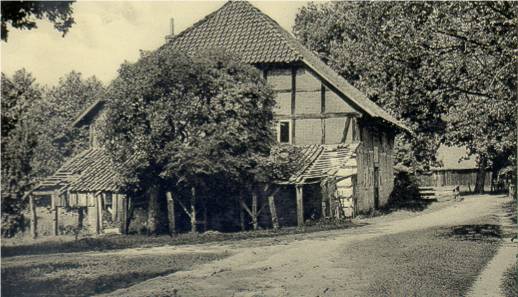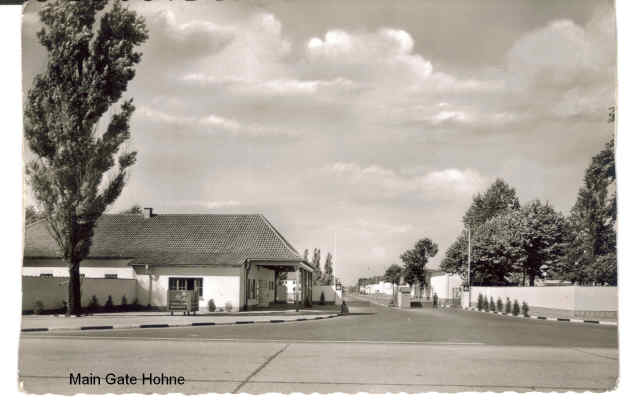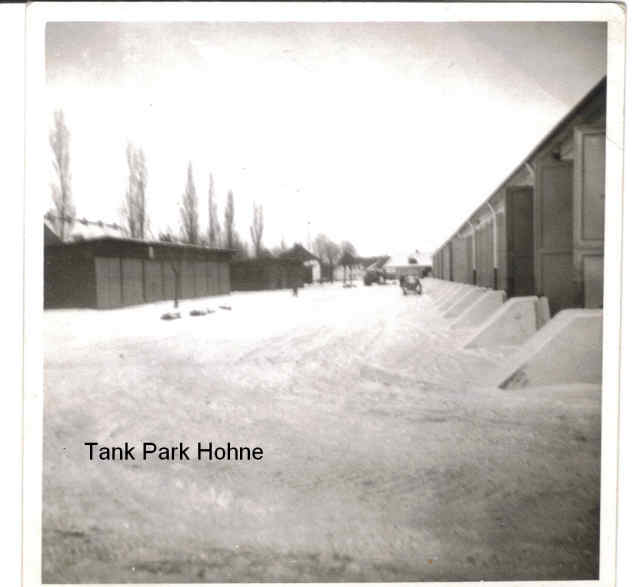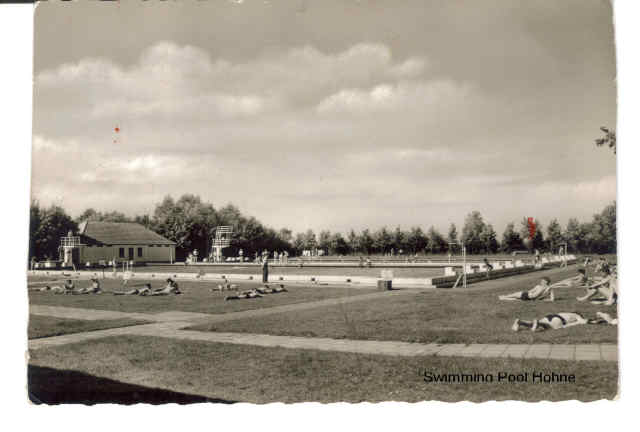Haig Barracks was so named after Field Marshal Sir Douglas Haig, with Caen Barracks being named after the battle for the French town. I am unsure as to whom Mr Campbell was.
Home to:
Regiments (not yet paced under individual barracks):
5 Royal Tank Regiment (sometime between the years of 1945-1953)
111 Provost Company RMP
I am trying to split the above list into the respective barracks. Should you be able to help, please do.
Extras
RACGW (Royal Armoured Corps Gunnery Wing)
RAGTE (Royal Artillery Gunnery Training Establishment)
1 x Dutch Armoured Regiment with German Leopard tanks circa 1987
Pictures of the reformation of 32 Armoured Engineer Regiment can be found by clicking here.

This is the old Belser Mühle which was situated on camp.
Probably the best place I was ever posted, or a very close second to Berlin.
My father told me he and others from the regiment had to remove the Swastika from the building when they were posted there. They lived opposite the roundhouse at the time.
Somebody said on the site why didn’t they use it for a mess, why when you have Schloss Brederbeck over the road, a very grand building indeed. Though spoilt by some idiots residing in the place.
I lived in MB7 and MB10, we had a grand lifestyle there, some great memories and times.
PB
.jpg)
Hoppenstedter Strasse. Notice the Eagle above the door.
When Cfn Raymond Skinner was here attached to Queen’s Royal Irish Hussars (stationed here between 1958-1961), the Regiment had the following types of equipment; Centurion and Conqueror tanks. The REME Sqn fitters had an ARV (armoured recovery vehicle),a ww2 half-track fitted with a folding jib on the front bumper, and a 1 ton Austen truck, Hq Sqn had the machine wagons Scammell recovery trucks etc. weaponry was 303 Enfield rifles, Sten guns, .38 Webley pistols and magazine fed Bren guns (LMG).
.jpg)
Another Street View.
The 14/20 King’s Hussars however had served primarily at Bovington for the previous two and a half years prior to arriving in Hohne, their role was the RAC Centre Regiment; A Sqn was however detached to Warminster over that period as part of what was at the time the demonstration Battalion.
We departed from Hohne around about June 1985 to take up the role of the RAC Training Regiment in Catterick, once again we had one Squadron detached, this time B Sqn who moved to Berlin as the Berlin Armoured Squadron.
The 14/20th returned to Germany in 1988 to be stationed in York Barracks Münster. At that time B Sqn was replaced in Berlin by C Sqn 14/20th, C Sqn then remained as the Berlin Sqn until the disbandment of the Sqn in September 1992 at that time C Sqn moved down to Münster to join the parent regiment in time for the subsequent amalgamation with the Royal Hussars in December 92.
IH
.jpg)
More blocks. Do you still live in one of these?
.jpg)
More blocks. But there are quite a lot in Hohne.
.jpg)
German soldiers on parade outside what appears to be WB 11.
.jpg)
Seeckt u. Mackensenbrücke. Caen barracks is to the right with the bridge leading into what was the Dutch Barracks. This barracks will soon be renovated to house the 1 CS Med Regiment in 2010.
.jpg)
Square
.jpg)
Looking in from the main gate (now back gate)
.jpg)
Parade passing the main gate (now back gate)
.jpg)
Stag on Nazi style. This gate was then the primary gate as it was the shortest route to the area which, after all, was why the camp was built in the first place
.jpg)
Hauptwache
.jpg)
This is a view of the displaced persons camp, within the barracks. It was set up after the liberation of Bergen Belsen.
.jpg)
The Kommandaturkantine (above and below)
.jpg)
.jpg)
4 RTR on Stables Parade
.jpg)
Sir Winston Churching visiting Hohne 13 May 1956

British main gate which leads onto the main road between Bergen and Winsen (L298). Circa 1960.
Courtesy of Cfn Raymond Skinner

Parade Ground of the Queen’s Royal Irish Hussars (QRIH). Circa 1960
Courtesy of Cfn Raymond Skinner

QRIH Tank Park, circa 1960.
Courtesy of Cfn Raymond Skinner

Circa 1960
Courtesy of Cfn Raymond Skinner
